Acoustic Foam For Ceilings
Share
Acoustic foam is a popular choice for ceilings because it is lightweight and a great sound absorber. Benefits of installing acoustic foam on a ceiling are:
- Eliminate echoes
- Lower reverberation time
- Dampen unwanted noise
What is the best acoustic foam for ceilings?
Some foam is specifically designed for ceilings like our drop ceiling panels, but any acoustic foam panel will work on a ceiling.
The most important factor to figure out is what thickness of foam you need for your ceiling. Thinner acoustic foams will absorb the high and mid spectrum sound waves while thicker foam panels absorb high, mid and lower end sound waves.
If you need to eliminate echoes and dampen smaller amounts of noise then a thinner acoustic foam will do the job. If you are concerned about recording or have a high noise volume then a thicker acoustic foam is a better option.
1 inch thick acoustic foam will give you the most bang for your buck. 1 inch foam panels are thin compared to our other foams, but are still effective for reducing flutter echoes and controlling the mid and high frequency ranges. Use these panels when good sound control is desired but substantial absorption is not imperative.
2 inch thick acoustic foam offers more sound absorbing power overall, and will take care of the mid to high frequency ranges. The 2" thick profile is the most popular and a safe bet for anyone planning a DIY vocal booth, studio, home theater, rehearsal space, or a broadcasting area.
3 inch thick acoustic foam will help absorb high, mid, and low end frequencies. These versatile panels can be used in almost any room.
4 inch thick acoustic foam has the highest sound absorbing power, and will help eliminate lower frequency ranges to help tone down bass. Use these panels in rooms with low-end problems.
Drop ceiling tiles are 2" thick but offer more of a benefit than normal 2-inch thick foam. The air gap between the floor above and the drop ceiling panels adds more sound dampening.
If you need help deciding, we would love to lend a hand! Click below to fill out our free room analysis.
How to install acoustic foam on a ceiling?
There are multiple ways to go about getting the foam mounted to the ceiling. Below are some recommended adhesives.
For drywall and smooth surfaces:
- Spray adhesive: 3M general purpose 45 or Loctite general purpose spray adhesive
- Strong double sided tape: Adhesive Squares or Gorilla Mounting Tape
- Push pins: longer T shaped pins work great
- 3M Command Strips
For concrete and textured surfaces:
- Construction adhesive: Liquid nails
Acoustic Foam Ceiling Installation Examples
This one is really cool. 1-inch white foam is used with lattice backing and an air gap in between the panel and the ceiling.
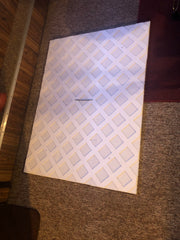
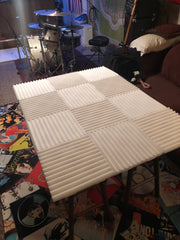
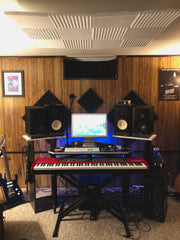
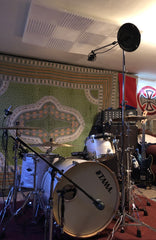
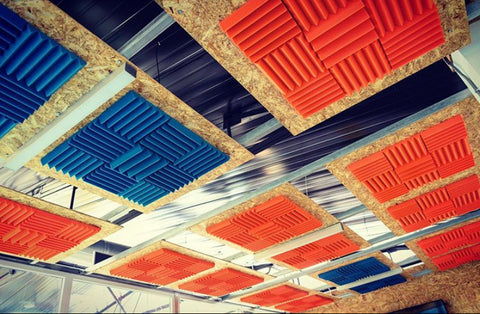
Below you can see the 1-inch thick wedge panels on a ceiling of a man cave. Go Browns!
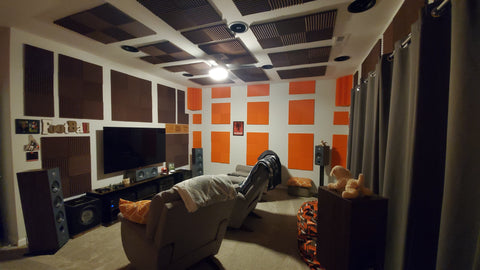
4-inch thick pyramids were used below to eliminate echo in a gaming room setup.
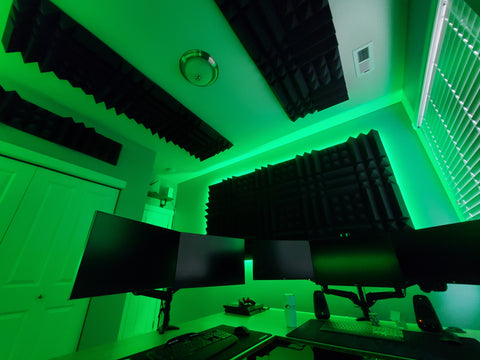
The below home theater setup has a bit of everything.
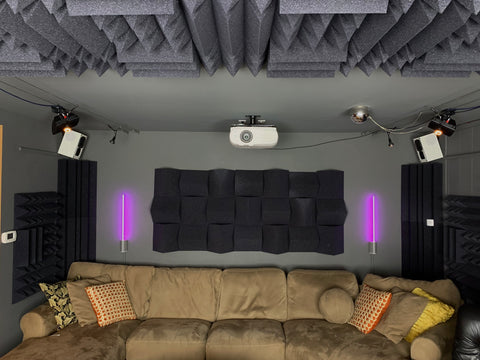
The voice over setup below utilized thick cloth curtains over the window, 4-inch wedges on the ceiling, and corner bass traps.
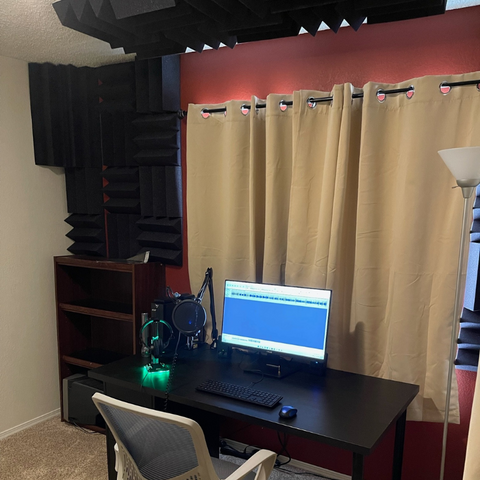
4-inch thick pyramids were used below to eliminate unwanted noise for folks trying to have conversations at a large conference.
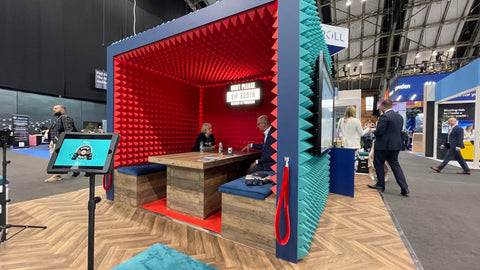
The livestream setup below has alternating 4-inch thick pyramids and 4-inch wedges.
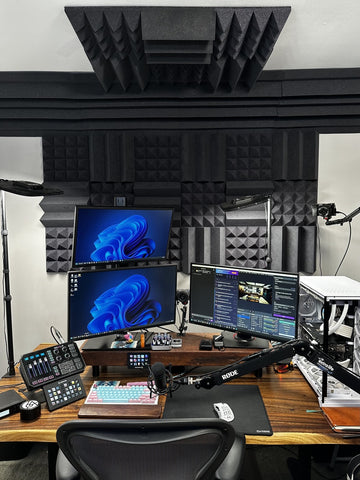
Acoustic foam is great for treating drum rooms. Below the 3-inch wedge panels are in use on the ceiling and walls.
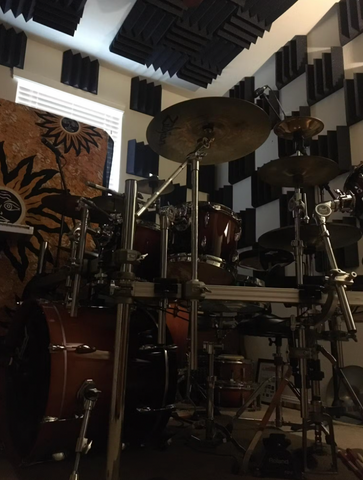
4-inch thick pyramids used below on the curved walls and the ceiling of a vocal booth.
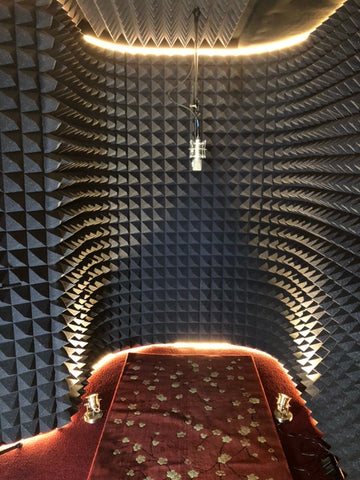
Genie mixed it added the 3-inch wedge panels in an alternating pattern inside his vocal booth. Check it out below.
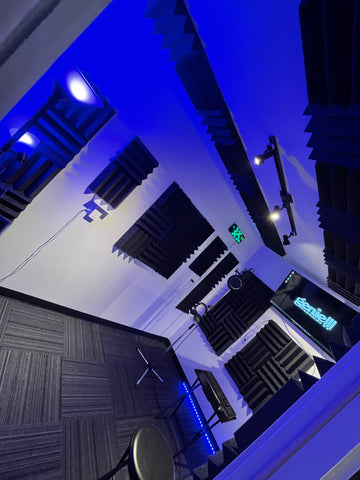
Check out more acoustic foam panels and corner solutions!








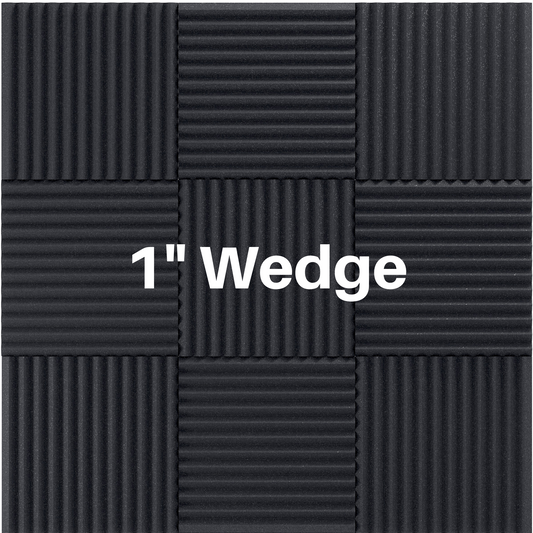
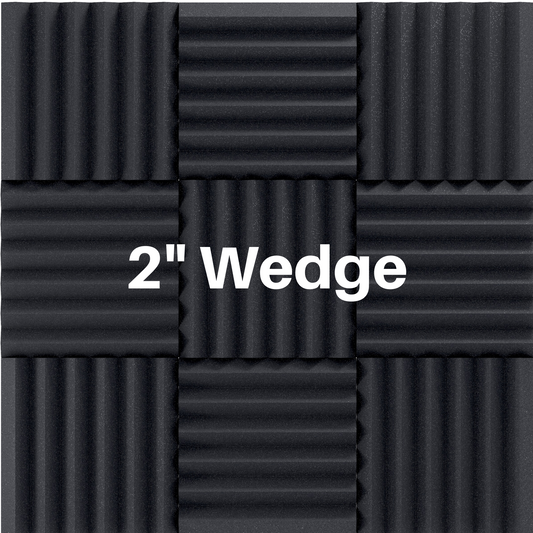

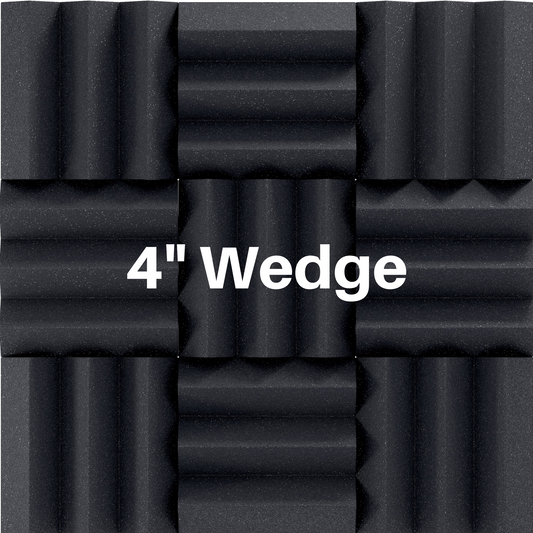
2 comments
Excellent read! This blog provides valuable insights into the benefits of using acoustic foam for ceilings. The information is well-presented and highly informative. Thanks for sharing this resource
This article provides valuable insights into the benefits of using acoustic foam for ceilings, offering practical tips and considerations for improving sound quality in any space. The comprehensive guide is a must-read for anyone looking to enhance acoustics and reduce noise levels effectively. Thank you for sharing this informative resource!